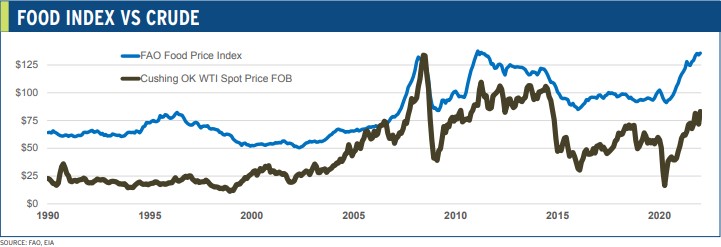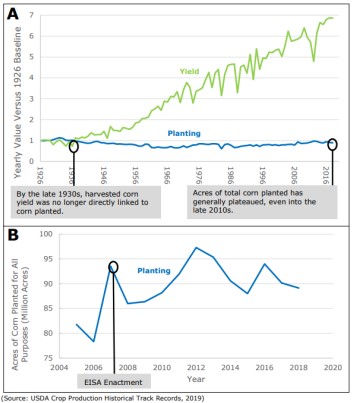Russia’s invasion of Ukraine sent shockwaves through the global oil markets, and everyone that depends on fossil fuels to make, market, or ship goods is taking a hit. If we want energy security and cost savings for consumers at the pump, we need more biofuels – not less.
Unfortunately, misinformation continues to spread about ethanol’s relationship to food prices. In an attempt at misdirection, anti-ethanol groups erroneously claim ethanol production exacerbates food prices, but nothing could be further from the truth.
- The price we pay for food is heavily dictated by the cost of crude oil – a correlation demonstrated by data on food and oil prices.

- In fact, the USDA says that the farm share of every dollar spent on food is just 14.3 cents – most of the food costs are driven by marketing and packaging.
- Farmers today grow five times as much corn as they did in the 1930s on 20 percent less land. (Figure A)
- Steady demand for biofuels is the main reason farmers have been able to invest and innovate to make more efficient use of existing cropland and supply consumer markets with more food and energy than ever before — all while protecting grasslands and forests. (Figure B)

- Ethanol producers also simply take starch from the corn to produce ethanol, while at the same time producing distillers grain, America’s second-largest source of animal feed, so that all of the fat and fiber continue into the food chain.
- Unfortunately, we saw the impact on the food supply chain during COVID when ethanol plants are shut down. Less ethanol production also means less commercial CO2 for meatpackers and refrigeration. Biofuels and a strong food supply chain go hand in hand.